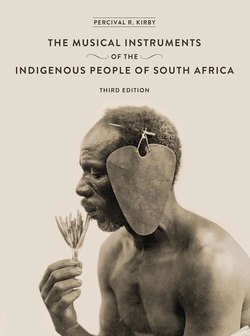Читать книгу Musical Instruments of the Indigenous People of South Africa - Percival Kirby - Страница 11
На сайте Литреса книга снята с продажи.
ОглавлениеPREFACE TO SECOND EDITION
WHILE writing this book, the original edition of which was published in 1934, I found it necessary to make several very important decisions regarding it.
In the first place I had to decide whether to arrange my material tribally, or to deal with each type of musical instrument separately from the technological and historical points of view, allowing the tribal aspects to emerge incidentally. I chose the second of these alternatives, my chief reason for doing so being that I wished the work to be, as far as was possible, a complete and comparative study of one particular aspect of the life of our aborigines.
In the second place I had to determine what was the most suitable manner of classifying the various musical instruments. I was, of course, well aware that no universally accepted ‘taxonomy’ of musical instruments existed, though two excellent systems had been evolved in recent years.
But these systems, respectively devised by Gevaert and Mahillon of Brussels (1877) and by Hornbostel and Sachs of Berlin (1914), although eminently scientific, ‘seemed to belong’, as my friend the late Canon Francis W. Galpin put it, ‘rather to natural science than to human artifacts’. For this reason I preferred to retain the age-old simple classification of musical instruments into the three main groups of percussion, wind, and string.1
But for the use of those who may wish to relate the instruments described in the present volume to the more scientific system of classification, I quote here the five main ‘Divisions’ as set out by Canon Galpin in the simplest possible terms. They are:
1. Autophonic, or self-vibrating instruments (rattles, xylophones, etc.).
2. Membranophonic, or skin-vibrating instruments (drums, etc.).
3. Chordophonic, or string-vibrating instruments (musical bows, etc.).
4. Aerophonic, or wind-vibrating instruments (whistles, flutes, etc.).
5. Electrophonic, or electrically vibrating instruments (‘Hammond’ organ, etc.).
It will be seen at once that no musical instrument belonging to Division 5 has ever been made or used by aborigines of South Africa. On the other hand those described in Chapters I and III of this book belong to Division 1, those in Chapter II to Division 2, those in Chapters IV, V, VI, and VII to Division 4, and those in Chapters VIII, IX, and X, to Division 3. With this as a guide, any museum director or musicologist will be able to place the musical instruments that I have described in their appropriate divisions.2
As I have been asked by the University of the Witwatersrand Publications Committee to add a few pages to this work to ‘bring it up to date’, I have done my best to do so. But when I began to reflect on the subject I soon realized that it might not only be a matter of addition but in some cases of subtraction.
For during the past thirty years the rapidly increasing urbanization of the non-European inhabitants of our country has resulted, as might have been expected, in a dying out of many old tribal institutions and the disappearance of many objects of material culture, including musical instruments. The case of the mbila, the great resonated xylophone of the Venda, is typical, for the old craftsmen who used to make it and the skilled musicians who used to play it have all died, and as they were apparently unable to train successors, the instrument is no longer being made and is now virtually extinct.
The historical importance of the resonated xylophone, however, is so great that I have devoted several paragraphs to further consideration of it in my additional appendix.
Since 1934 I have published twenty-one papers on African musical practices, a dozen of which are concerned with instrumental music. One of these was the report on the music of certain Bushmen which I studied during the Witwatersrand University Kalahari Expedition of 1936, of which I was a member. Descriptions of the musical instruments observed on this and on other occasions appear in the new appendix, under the titles of the appropriate chapters of this book.3
Finally I would add that my more recent studies in comparative musicology have convinced me that, though the greater part of the continent of Africa has for centuries been subjected to foreign influences, the effects of which are plainly visible to the ethnomusicologist, South Africa, south of the Limpopo, has largely escaped those influences. The few exceptions, such as the Tshopi and the Venda areas, are so distinctive that they serve to throw into strong relief the fact that South Africa is still able to demonstrate to the world three separate stages in the development of music, and also how these have reacted one upon another. In no other part of the world, as far as I am aware, is it possible to compare the musical practices of three different epochs in human history, as represented by our Bushmen, Hottentots, and Bantu, or to be in a position to observe in action what may legitimately be regarded as some of the earliest stages in the evolution of musical instruments.
Grahamstown, South Africa, June 1964
1See article on ‘Instruments’ in Grove’s Dictionary of Music and Musicians, fifth edition, London, 1954, vol. iv, for particulars of the different systems of classification of musical instruments, and the principles upon which they were based.
2Galpin, F. W., Textbook on European Musical Instruments, London, 1937, pp. 32–36. Here will be found the author’s complete system of classification.
3Kirby, P. R., in Bushmen of the Kalahari, Johannesburg, University of the Witwatersrand Press, 1937, pp. 1–59.
